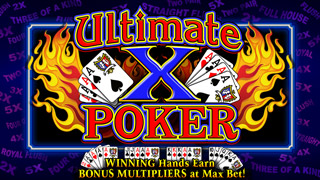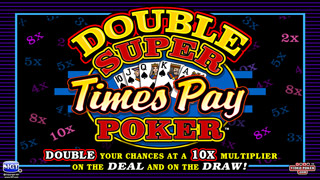Video Poker Distributions are Not Normal
-
New2vp
- Video Poker Master
- Posts: 1878
- Joined: Mon Sep 11, 2006 4:02 am
Video Poker Distributions are Not Normal
You should expound on just the one point of why VP
variance isn't a bell curve and put it in its own thread. I fear it was
lost in your long post...and it really is good info.That is why
I put a picture in the post, so people could SEE the difference. But
at your request, I have gone back and put that information in bold blue font in the long post. And copied it here in italics:Video poker distributions are generally
severely skewed to the right, meaning that the left tail is shorter than
the normal distribution and the right tail is considerably longer.
This is evidenced by the limited though frequent losses when you play
(you cannot lose more than you bet) vs. the large but infrequent
jackpots that are available.There are several consequences of
this. One is that the expected value is generally to the right of the
peak of the distribution. Since this game is almost breakeven, you
can't really tell the difference between the normal distribution's peak
and a gain/(loss) of zero; but the peak of the video poker distribution
is clearly to the left of expected return, in loss territory.A
video poker distribution is NOT symmetric, unlike what you see with a
normal, bell-shaped distribution. And the normal distribution
probabilities (68.27% within one standard deviation, 15.866% in both
right and left tails; 95.45% within two standard deviations, 2.275% in
both tails; 99.73% within three standard deviations, 0.135% in both
tails; etc.) DO NOT APPLY. Generally, there is considerably less chance
of being in the left tail, meaning fewer large losses than are
predicted by the normal distribution; and, there is considerably more
chance of being in the right tail, meaning more large gains than are
predicted by the normal distribution.Any suggestions on how I can make this information more understandable are welcome.
variance isn't a bell curve and put it in its own thread. I fear it was
lost in your long post...and it really is good info.That is why
I put a picture in the post, so people could SEE the difference. But
at your request, I have gone back and put that information in bold blue font in the long post. And copied it here in italics:Video poker distributions are generally
severely skewed to the right, meaning that the left tail is shorter than
the normal distribution and the right tail is considerably longer.
This is evidenced by the limited though frequent losses when you play
(you cannot lose more than you bet) vs. the large but infrequent
jackpots that are available.There are several consequences of
this. One is that the expected value is generally to the right of the
peak of the distribution. Since this game is almost breakeven, you
can't really tell the difference between the normal distribution's peak
and a gain/(loss) of zero; but the peak of the video poker distribution
is clearly to the left of expected return, in loss territory.A
video poker distribution is NOT symmetric, unlike what you see with a
normal, bell-shaped distribution. And the normal distribution
probabilities (68.27% within one standard deviation, 15.866% in both
right and left tails; 95.45% within two standard deviations, 2.275% in
both tails; 99.73% within three standard deviations, 0.135% in both
tails; etc.) DO NOT APPLY. Generally, there is considerably less chance
of being in the left tail, meaning fewer large losses than are
predicted by the normal distribution; and, there is considerably more
chance of being in the right tail, meaning more large gains than are
predicted by the normal distribution.Any suggestions on how I can make this information more understandable are welcome.
-
Frank Kneeland
- VP Veteran
- Posts: 762
- Joined: Wed Feb 02, 2011 6:59 pm
For those of you out there without a deep understanding of probability you may not understand just how rare and important this information is. I'm going to try to add a layman's explanation in the morning, but I'll have to sleep on it. Suffice it to say for now this is really cool info, very topical, and very important. If you play Video Poker you need to follow this thread.~FK
-
New2vp
- Video Poker Master
- Posts: 1878
- Joined: Mon Sep 11, 2006 4:02 am
The graph in the original post is based on 700 hands of Almost Positive Deuces Wild, a 99.96% game, with per hand characteristics that follow:
ALMOST POSITIVE DEUCES WILD
Hand Name
Payout
Gain/Loss
% Prob.
About once per
ROYAL FLUSH
4000
3995
0.0023%
43461
hands
4 DEUCES
1000
995
0.0179%
5590
hands
ROYAL FLUSH W/2
125
120
0.1886%
530
hands
5 OF A KIND
75
70
0.3075%
325
hands
STRAIGHT FLUSH
55
50
0.5570%
180
hands
4 OF A KIND
20
15
6.0642%
16.5
hands
FULL HOUSE
20
15
2.6121%
38.3
hands
FLUSH
15
10
2.1226%
47.1
hands
STRAIGHT
10
5
5.6556%
17.7
hands
3 OF A KIND
5
0
26.6993%
3.75
hands
NOTHING
0
-5
55.7729%
1.79
hands
Total Return
99.9569%
Variance
25.4989
Standard Deviation
5.0496
The three peaks of the video poker distribution in the chart indicate three likely scenarios, though there are others, albeit with lesser probability:(1) The first peak is a situation in which neither quad deuces nor a royal flush was hit; all 700 hands center around a small cumulative loss.(2) The second peak is lower and represents the less likely situation in which one set of quad deuces but no royal flush was hit; again the other 699 hands center around a small loss, making the overall gain average less than 1000 coins. Actually the gain on hitting quad deuces is 995 coins because you must subtract the 5 coins bet.(3) The third and lowest peak represents a situation in which a royal flush is hit; because of the typical losses on the other 699 hands, the peak is at a point that is less than 3995 coins.Certainly other combinations of quad deuces and royal flushes may occur within 700 hands, but since these are less likely, these peaks are not as prominent and may be hidden by the distribution of the other possible combinations of the lesser-paying hands.Eventually, when enough hands are played all the peaks but one disappear; after a million hands or so, the distribution looks closer and closer to the normal distribution, causing the pink and blue lines to essentially coincide.
-
New2vp
- Video Poker Master
- Posts: 1878
- Joined: Mon Sep 11, 2006 4:02 am
To convert the per hand characteristics of the game to the mean and variance of the gain/loss for 700 hands, we employ a few calculations:Mean of Gain/Loss for 700 hands= Expected Return x Number of Hands x Number of Coins Bet per Hand minus Coins Bet = 0.99956879 x 700 x 5 - (700 x 5) = - 1.5092 coinsVariance of Gain/Loss for 700 hands= Game Per Coin Variance x Number of Hands xNumber of Coins Per Hand2
= 25.49886 x 700 x (5 x 5) = 446230.05 or a standard deviation of 668.0045 (the square root of the variance.Then, the blue graph is a representation of the normal distribution with mean of -1.5092 and standard deviation of 668.0045.The calculation of the pink graph is based on what are known as convolutions and are beyond the scope of this thread, though I will make one attempt to describe how this is done and possibly Frank may think of an easier way to describe the process.
= 25.49886 x 700 x (5 x 5) = 446230.05 or a standard deviation of 668.0045 (the square root of the variance.Then, the blue graph is a representation of the normal distribution with mean of -1.5092 and standard deviation of 668.0045.The calculation of the pink graph is based on what are known as convolutions and are beyond the scope of this thread, though I will make one attempt to describe how this is done and possibly Frank may think of an easier way to describe the process.
-
New2vp
- Video Poker Master
- Posts: 1878
- Joined: Mon Sep 11, 2006 4:02 am
You can see all the possible gains and losses for any single hand and the corresponding probabilities in the post that is two posts prior to this one. In this post, I will expand that to all the possibilities for any 2 hands with their probabilities. You will see that there are many gain/loss combinations that are not possible at all, while most especially the large ones have extremely small probabilities. One important property is that the probabilities must add to 1 to be sure that we didn't forget anything.After we do this for two hands, we simply have to do the same thing again 698 more times and we will have all the possibilities for gains and loss for 700 hands and their associated probabilities. It is not fun to do this by hand, so for repetitions, it is best to construct a program or a mechanism in Excel to automate this. After that is done, we can construct the pink graph that you saw at the beginning of this thread.
Gain/Loss
Probability
7990
0.0000000005
4990
0.0000000082
4115
0.0000000868
4065
0.0000001415
4045
0.0000002567
4010
0.0000039926
4005
0.0000009771
4000
0.0000026003
3995
0.0000122865
3990
0.0000256672
1990
0.0000000320
1115
0.0000006748
1065
0.0000011000
1045
0.0000019953
1010
0.0000310394
1005
0.0000075961
1000
0.0000202153
995
0.0000955170
990
0.0001995406
240
0.0000035582
190
0.0000116002
170
0.0000210411
140
0.0000094545
135
0.0003273246
130
0.0000801043
125
0.0002131798
120
0.0010415680
115
0.0021042458
100
0.0000311062
85
0.0005335592
80
0.0001305749
75
0.0003474962
70
0.0016419115
65
0.0043978522
60
0.0002368445
55
0.0006303094
50
0.0029781977
45
0.0062216314
30
0.0075277591
25
0.0036844500
20
0.0102561870
15
0.0487296615
10
0.1113173271
5
0.0538597480
0
0.1343201739
-5
0.2978383881
-10
0.3111010177
Gain/Loss
Probability
7990
0.0000000005
4990
0.0000000082
4115
0.0000000868
4065
0.0000001415
4045
0.0000002567
4010
0.0000039926
4005
0.0000009771
4000
0.0000026003
3995
0.0000122865
3990
0.0000256672
1990
0.0000000320
1115
0.0000006748
1065
0.0000011000
1045
0.0000019953
1010
0.0000310394
1005
0.0000075961
1000
0.0000202153
995
0.0000955170
990
0.0001995406
240
0.0000035582
190
0.0000116002
170
0.0000210411
140
0.0000094545
135
0.0003273246
130
0.0000801043
125
0.0002131798
120
0.0010415680
115
0.0021042458
100
0.0000311062
85
0.0005335592
80
0.0001305749
75
0.0003474962
70
0.0016419115
65
0.0043978522
60
0.0002368445
55
0.0006303094
50
0.0029781977
45
0.0062216314
30
0.0075277591
25
0.0036844500
20
0.0102561870
15
0.0487296615
10
0.1113173271
5
0.0538597480
0
0.1343201739
-5
0.2978383881
-10
0.3111010177
-
shadowman
- Video Poker Master
- Posts: 3587
- Joined: Mon Oct 23, 2006 5:42 pm
One thing to keep in mind is that every game has a slightly different distribution. The higher the variance generally ends up making the peak of the curve skewed further to the left.
Another aspect is casino extras are not figured in. Most casinos provide freeplay, cashback or both. What these items do is shift the curve to the right somewhat depending on the exact amounts. Just a couple more things to keep in mind.
Another aspect is casino extras are not figured in. Most casinos provide freeplay, cashback or both. What these items do is shift the curve to the right somewhat depending on the exact amounts. Just a couple more things to keep in mind.
-
New2vp
- Video Poker Master
- Posts: 1878
- Joined: Mon Sep 11, 2006 4:02 am
One thing to keep in mind is that every game has a slightly different distribution. The higher the variance generally ends up making the peak of the curve skewed further to the left.Great point! I added emphasis to the end of what you said because it may be confusing to say it that way. Whomever named the concept of "skewness" decided that it was the direction of the longer and heavier tail that determined the direction of the skewness. So, actually, video poker distributions are skewed to the right because of jackpots, while their main peak is, as you say, generally to the left of the expected return.I don't know if it is more confusing, but right-skewed distributions can also be referred to as positively skewed, while left-skewed distributions, which we will seldom encounter in video poker are negatively skewed. I suppose an easy mnemonic device would be to think that royal flushes, usually the most positive thing that can happen, influence these distributions to be positively skewed.Another aspect is casino extras are not figured in. Most casinos
provide freeplay, cashback or both. What these items do is shift the
curve to the right somewhat depending on the exact amounts. Just a
couple more things to keep in mind.Excellent point about casino extras!
-
New2vp
- Video Poker Master
- Posts: 1878
- Joined: Mon Sep 11, 2006 4:02 am
The area under the curves indicate the probability with which different ranges of events can occur. While the blue line is fairly close to straddling the line at 0 coins won/lost, indicating a 50/50 chance at winning or losing, the pink line has most of its area to the left, indicating a greater chance of losing than winning.On the other hand, the hump in the pink line peaking near 3700 coins suggests a real chance at making a large profitable deviation from the center (there is some visible area under the pink curve there), whereas with the blue line, such an outcome would be virtually impossible (almost no area under the blue curve beyond +2000 coins).
-
Frank Kneeland
- VP Veteran
- Posts: 762
- Joined: Wed Feb 02, 2011 6:59 pm
The Relevance of
Non-Normal-Distribution in VP.We all know the concept of
an average, and with small numbers they are easy to figure out. If I
asked you what your average weekly pay was, you'd be able to tell me
even if you got paid every other week, or just once a month. $1,000
every other week would average out to $500 a week. Easy...It
would be a little harder to tell me what your average weekly income
was if you were a tipped employee, but still not hard. Add up all the
money you've made so far at your job and divide by the number of
weeks you have worked. Boom...there's your average. For argument's
sake let's say the average is still $500.
Now let's add the concept of standard
deviation.
What if it was Saturday, you had a $400
bill to pay by next Friday, no money on hand, and wanted to know what
were your chances of making at least $400 in tips plus wages by weeks end?
For this you couldn't do simple addition and devision, you'd have to
know the standard deviation. If you haven't done standard deviation
before it is surprisingly easy once you know the steps.
First make a mean average of all
the results.
Then compare each individual
result to the average and square the difference.
Then you average all your squared
differences.
And lastly you take the square
root of that.
What you end up with is a rather
magical number that tells you a lot about the probabilities of things
happening and not happening, and how unlikely or likely it is for
things to be really out of whack.
In our above example of the tips plus
wages job, if your average weekly income was $500 and your standard
deviation was plus or minus $100, then you only have a 68.2% chance
of making your bill payment. On the other hand if your standard
deviation was only plus or minus $10, your chance of making it would
be over 99%. This sort of information can come in handy in life, and
it almost always follows what is known as a normal distribution, what
has come to be called The Bell Curve.
A surprising number of things in life
hold to a normal distribution; the heights of men on basketball
teams, the size of bread loafs in a bakery, the failure rate of parts
on a space shuttle, etc... Wherever we find a normal distribution the
number of results above and below the average are roughly equal.
Therefore, your chances of getting a larger than normal loaf of bread
are about equal to getting a smaller one.
One of the things that does not hold
to a normal distribution is video poker results and they diverge in
several very particular ways.
You are very likely to do slightly
worse than average.
It's is not possible to do
incredibly worse than average because you are limited by the per
hand bet size.
Every now and then you'll do a lot
better than average, but it's very uncommon.
Doing exactly as expected is far
rarer than it would be if VP followed a normal distribution.
What this means to you is that if you
are playing a machine rated at 99.94% it is actually far more likely
that you'll get slightly less than the rated return...and every now
and then, someone out there will be getting FAR more and keeping the
average up, but it may not be you. The average is 99.94% but you are
more likely to do slightly worse or a whole lot better.
If you do exactly as
expected alert the media.
-
Frank Kneeland
- VP Veteran
- Posts: 762
- Joined: Wed Feb 02, 2011 6:59 pm
Due to the importance of this thread what I'd now recommend is we hear from the people out there that might not understand all the information. Ask questions and we'll answer them.What would be great is if everyone reading this walked away with at least the ability to calculate standard deviations.

























































